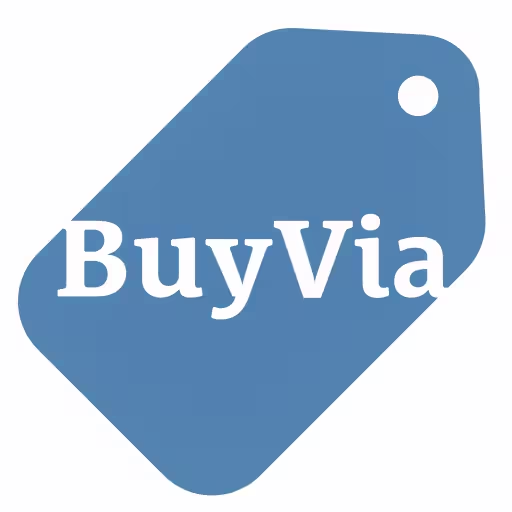We’ve all been there—shopping around for a product, only to wonder if we’re getting the best deal or if we’re missing out on a cheaper price somewhere else. Price comparison tools and apps are here to save the day, helping us find the best prices with just a few clicks. Whether you’re shopping for electronics, clothes, or even groceries, using price comparison tools can help you make smarter, more informed buying decisions.
In this blog, we’ll explore the world of price comparison apps, websites, and tools. We’ll look at the top ones available, how they work, and how you can make the most of them to save money. Ready to find the best deals? Let’s dive in!
Top Price Comparison Apps, Tools and Websites
When it comes to finding the best deal, price comparison tools can be a shopper’s best friend. Whether you're online or in a physical store, these apps and websites help you easily compare prices across different retailers. Here are some of the top tools that make saving money a breeze:
1. ShopSavvy

ShopSavvy is one of the most popular price comparison apps out there. It’s designed to give you the best deal possible by scanning barcodes or QR codes. Whether you’re in a store or shopping online, ShopSavvy shows you price comparisons from retailers both nearby and nationwide. It also tracks the price history of products, so you can see if you’re getting a fair deal.
Features
- Barcode and QR Code Scanning: Scan products in-store to instantly compare prices across various retailers.
- Price Alerts: Set alerts for price drops and new deals on products you want.
- Price History: See how prices have changed over time, so you know if now’s the best time to buy.
Pros
- Works with over 50,000 retailers.
- Alerts you when the price drops for products you’re interested in.
- Offers both in-store and online price comparisons.
Cons
- Limited international coverage; mostly focused on the U.S.
- Some retailers may not always update their prices on the app.
Best For
- Shoppers who want to compare prices both online and in-store and get real-time price alerts.
2. BuyVia

BuyVia is a versatile price comparison tool that does more than just show you the lowest prices. It offers personalized recommendations, exclusive coupons, and even tracks deals for you. You can set alerts for specific products, ensuring you never miss out on a sale.
Features
- Personalized Deal Alerts: Get notifications for discounts tailored to your shopping habits.
- Coupons and Discounts: Find promo codes and additional savings for online and in-store shopping.
- Multiple Retailers: Compares prices across major retailers and shopping websites.
Pros
- Shows coupons and exclusive deals, allowing you to save even more.
- User-friendly interface that’s simple to navigate.
- Covers a broad range of categories, from electronics to fashion.
Cons
- Limited to U.S. retailers.
- Sometimes, the deals and coupons may not work for every product.
Best For
- Shoppers looking for personalized discounts and an app that tracks deals for them.
3. Amazon Price Comparison

Though Amazon is primarily known as an online retailer, it also offers a built-in price comparison tool for its users. The app allows you to compare prices across different sellers, so you can find the best deal on a product. This tool is handy if you're already shopping on Amazon and want to make sure you're getting the best possible price.
Features
- Seller Comparisons: View prices from different sellers for the same product.
- Price History: Check historical price trends to see if the product is priced lower than usual.
- Prime Member Benefits: See exclusive deals and discounts for Amazon Prime members.
Pros
- Works seamlessly with Amazon’s vast product selection.
- If you’re already a Prime member, it adds extra value with exclusive deals.
- Allows you to compare product prices with ease.
Cons
- Limited to Amazon’s marketplace; doesn't show prices from external retailers.
- Price comparison features are more effective for physical goods than digital products.
Best For
- Amazon shoppers who want to ensure they’re getting the best deal from multiple sellers.
4. PriceGrabber
![url_upload_67bf2999e2aea.png [jpg-to-avif output image]](https://cdn.prod.website-files.com/5b476bdb731aa1e787a6aa02/67bf2abca6c9c7bf65e73473_67bf29a7ffd87d2451e94557_ezgif-10cbf27dcdccc5.avif)
PriceGrabber is an established price comparison website that lets users compare prices across millions of products and thousands of stores. It’s a fantastic tool for finding everything from electronics to household items. The site also offers customer reviews, which can help you make more informed decisions.
Features
- Millions of Products: Compare prices on a massive range of categories, from electronics to health products.
- Product Reviews: Check reviews before making a purchase to ensure you’re buying quality products.
- Search Filters: Narrow down results by category, price range, and product ratings.
Pros
- Extensive database of products and retailers.
- Provides both prices and product reviews, making it a one-stop shop for shopping research.
- Offers advanced search filters to help you find exactly what you're looking for.
Cons
- Some products may have incomplete or outdated information.
- The user interface is a bit cluttered with ads.
Best For
- Shoppers looking for a comprehensive product comparison tool that also includes product reviews.
5. Slickdeals

Slickdeals is more than just a price comparison tool—it's a community-driven platform that helps users find the best online deals. Users can post deals, vote on the best offers, and even set up deal alerts for products they’re interested in. This collaborative approach makes it easier to spot the best deals from across the web.
Features
- Community-Driven Deals: Deals are posted by users, so you get real-time, crowd-sourced savings.
- Deal Alerts: Set up alerts for price drops or discounts on specific products.
- Coupons and Promo Codes: Find extra discounts with coupons and codes shared by the community.
Pros
- Real-time updates from a community of savvy shoppers.
- Wide range of product categories, from electronics to home goods.
- Excellent for finding coupon codes and flash sales.
Cons
- Not every deal listed is from a reputable retailer.
- The website can sometimes be overwhelming with its number of deals.
Best For
- Bargain hunters who want to leverage a community’s knowledge to find the best deals and discounts.
6. DealNews

DealNews is another excellent tool for finding curated lists of the best deals across various categories. The website features deals from a wide range of product categories, including electronics, home appliances, and clothing, making it a go-to site for finding bargains.
Features
- Curated Deals: Daily lists of top deals, handpicked by DealNews editors.
- Price Alerts: Set alerts for specific deals and get notified when the price drops.
- Wide Variety of Categories: From tech gadgets to travel deals, DealNews covers a lot of ground.
Pros
- Expertly curated deals from reliable retailers.
- Includes detailed product information, so you know exactly what you're getting.
- Offers exclusive discounts that can’t be found elsewhere.
Cons
- It’s more focused on deal hunting than price comparison.
- The site sometimes prioritizes flash deals, which may sell out quickly.
Best For
- Shoppers looking for a curated selection of the best deals from trusted sources.
7. Honey

Honey is an incredibly popular browser extension that helps users find the best prices while shopping online. While it’s primarily known for finding and applying coupon codes, Honey also offers a price comparison feature for certain product categories. With over 17 million users, Honey makes it easy to compare prices from a range of stores to ensure you’re getting the best deal.
Features
- Coupon Finder: Honey automatically finds and applies the best coupon codes at checkout to save you money.
- Price History and Tracking: The “Honey Droplist” feature allows you to track prices for specific products and get alerts when they drop.
- Price Comparison: Honey compares prices across different online stores to help you find the best deal before you buy.
Pros
- Automatically applies coupon codes for effortless savings.
- Price tracking and alerts help you buy at the best time.
- The browser extension is simple to install and easy to use.
Cons
- Price comparison is available for select products, not all.
- Limited to online stores only—no in-store price comparison.
Best For
- Online shoppers who want to save on everyday purchases and find the best deals while browsing.
How to Choose the Right Price Comparison Tool
With so many price comparison tools available, it can be tough to know which one will best suit your shopping needs. The key is to understand your own shopping habits and preferences, then choose a tool that aligns with them. Here’s how you can make an informed decision:
1. Assess Your Shopping Preferences
Think about how and where you shop most often. Are you shopping for in-store items, or do you prefer online shopping? If you shop online frequently, tools like Honey or PriceGrabber that focus on digital prices might be more up your alley. On the other hand, if you frequently compare prices while physically in stores, tools like ShopSavvy that offer barcode scanning might be a better fit for you.
2. Look for Features That Match Your Needs
Each tool has its own unique features, so it’s important to pick one that offers the functionality you need. For instance, if you’re looking for convenience and automation, Honey’s coupon finder and price tracker might save you the most time. However, if you want to compare prices across a wider range of retailers, Slickdeals or BuyVia might be better, as they have extensive deal-tracking capabilities and in-depth product categories.
3. Check for Supported Retailers and Categories
Not all tools compare prices across every retailer or product category. For example, Amazon’s comparison tool is great for products sold on its platform but doesn’t support other marketplaces. If you’re interested in comparing prices across a broad range of online retailers, PriceGrabber or DealNews might be more suited to your needs, as they offer more extensive product coverage.
4. Consider Ease of Use
A tool should be simple to use and intuitive. If you’re someone who doesn’t want to spend too much time figuring out how to navigate an app, then tools with a straightforward interface like Wix’s Product Name Generator or ShopSavvy might work best. Make sure the price comparison tool you choose offers an easy-to-understand process without overwhelming you with complex steps.
5. Look at Customer Reviews
Before you commit to using a price comparison tool, it’s always a good idea to check out customer reviews and ratings. These can provide insight into how well the tool works, its reliability, and whether it actually delivers savings. Popular review sites and app stores can be great resources to gauge the effectiveness of the tool you’re considering.
Best Practices for Using Price Comparison Tools
Price comparison tools can be incredibly helpful in saving you time and money, but using them effectively requires a bit of strategy. To get the best results, here are some best practices to keep in mind:
Be Specific with Your Search Criteria
When using price comparison tools, the more specific you are with your search, the better the results. Rather than just searching for “laptop,” for example, try narrowing it down to include specific models, features, or brands. This helps the tool filter out irrelevant results, showing you the exact options that meet your needs.
Use Multiple Tools for Comprehensive Results
While each tool has its strengths, they might not all pull data from the same retailers or sources. To ensure you're getting the best possible deal, try using multiple comparison tools. For example, use PriceGrabber to see a range of prices across different stores, and then check Honey for available coupons or discounts.
Set Price Alerts
One of the best features of many price comparison tools, like ShopSavvy and BuyVia, is the ability to set price alerts. This way, you don’t have to constantly monitor prices for your favorite products. Set an alert for when prices drop, and you’ll be notified immediately, so you can grab the deal at the right moment.
Check for Hidden Fees
Price comparison tools show you the prices from various retailers, but they don’t always account for shipping costs, taxes, or other additional fees. Be sure to consider these factors before making your final purchase decision. Sometimes the “cheapest” option might not be the most affordable once you factor in shipping.
Read Customer Reviews
Before making a final purchase, especially if you're using price comparison for major items, check customer reviews. Tools like PriceGrabber and DealNews provide access to product reviews that can help you assess whether a product is worth its price. Don’t just focus on the price—make sure the product quality meets your expectations!
Conclusion
Price comparison tools are like your personal shopping assistant, helping you find the best deals without the hassle. Whether you're hunting for the latest gadgets, fashion, or even groceries, these tools make it easy to compare prices from multiple stores and find the best option. From ShopSavvy’s barcode scanner to Slickdeals’ community-driven savings, there’s a tool for every kind of shopper.
The key to making these tools work for you is being strategic—narrowing down your searches, setting up price alerts, and checking out customer reviews. With a little effort, you’ll always be the savvy shopper who knows when to grab that deal. So, next time you're shopping, don’t forget to use these tools. After all, why pay more when you can save?






































